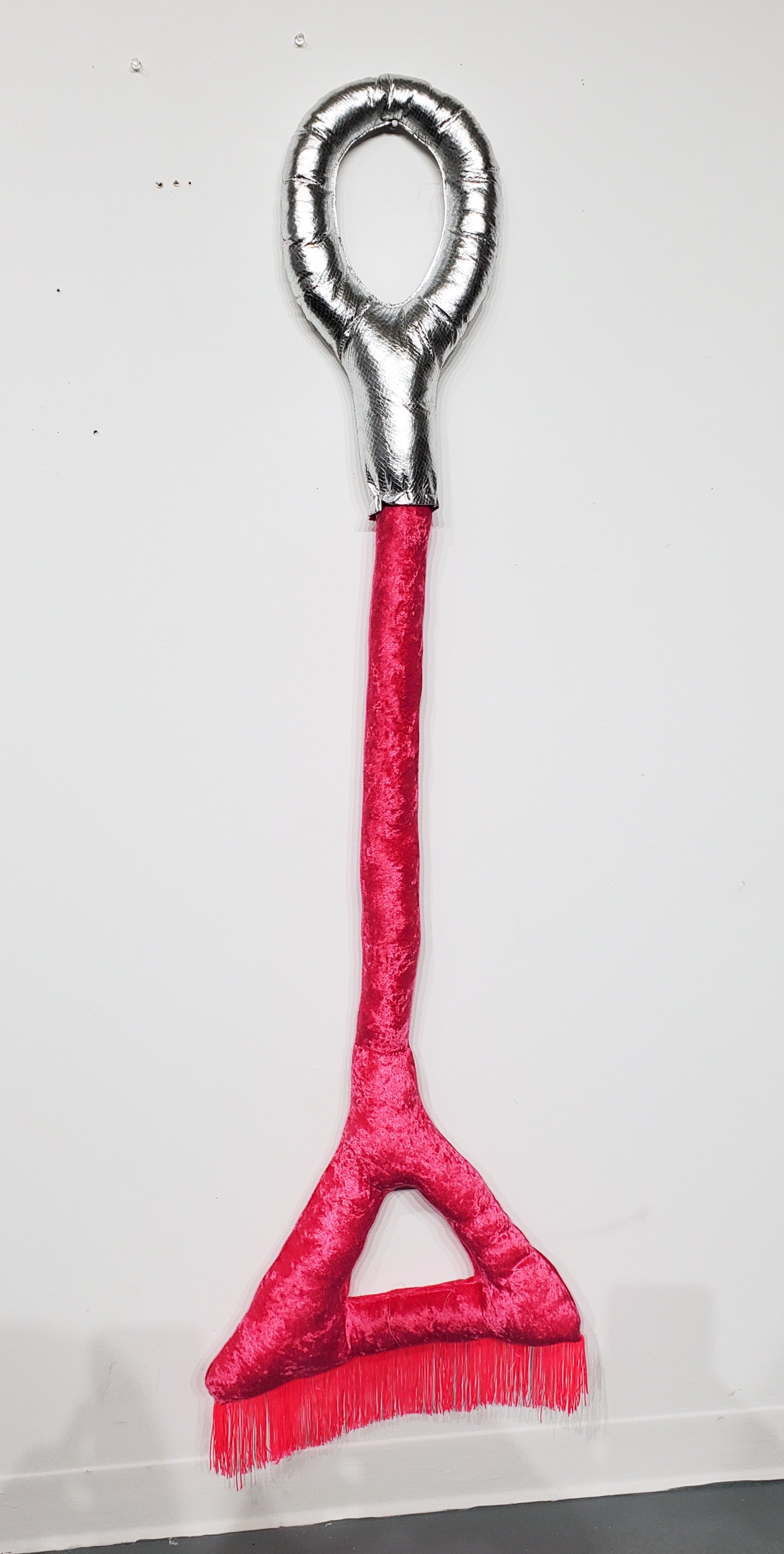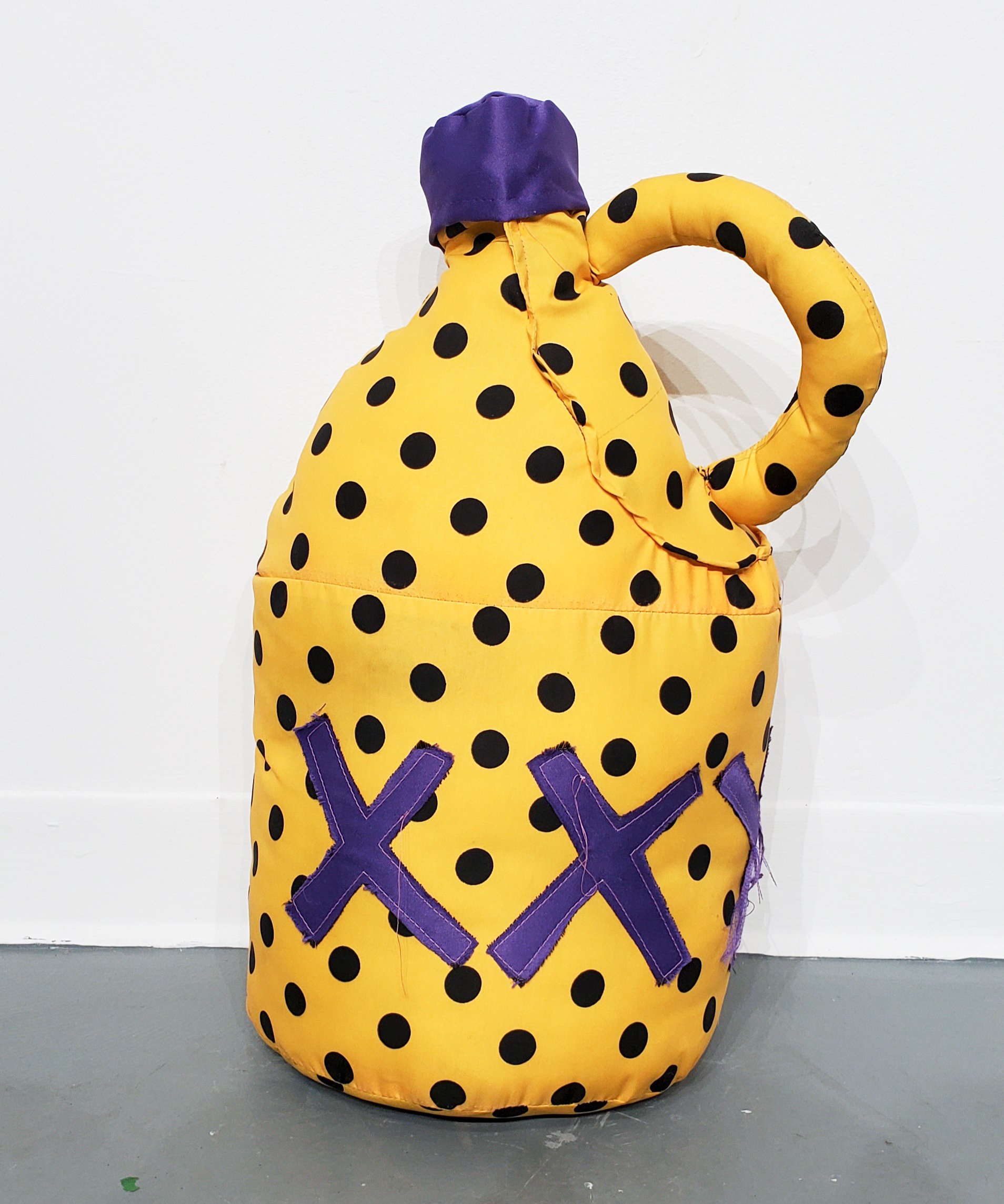
Abigail Ogilvy Gallery is thrilled to announce that we are working with artist Allison Baker, who will be exhibiting alongside Katrina Sánchez during this year’s installment of SPRING/BREAK Art Show in Los Angeles. We recently sat down with Allison to chat more about her artwork, influences, and advice.
Abigail Ogilvy: How does your work intersect, connect and explore gender? How does your background in Gender Studies affect your work?
Allison Baker: My work is seated from a point of deep domestic discontent and the dual pursuits of the traditionally feminine bumping against our 21st century reality where we strive to have our cake (and buy it and make it and bake it and serve it and share it and clean up the mess after with an effortless smile) and to eat it too.
The work is situated against a deep longing for a fantasy life and cognitive dissonance between the realities and tumult within the home. The work embodies and reflects that: layers of attraction and revulsion, desire and desperation, deep resentment and hostility and a “phantasy.” The work feels disjointed, discombobulated; recognizable and rendered real but neutered of all utility, fallacid, devoid of use and ability, and simply –or hostile– asserting its “unuse” amplified by our understanding of potential. The scale shifts cue you into a feeling that something is wrong or off things aren't as they seem or should be exemplifying a surreality.
AO: You have stated that your work explores themes of finesse, persuasion, cleaning, caregiving, and manual labor. Can you elaborate on these concepts and the nature of these motifs in your work?

Allison Baker, Untitled: Pink Broom
AB: A thematic subtext of my work revolves around cleaning, caregiving, and labor. These cycles of domestic labor and the abject (within the work I employ the definition of “abject” as the point where there is a breakdown in the delinitation between self and other), with particular attention given to the body and role of cleaning or caregiving. Conceptually, the work surrounding feminist labor is increasingly focused on a subtle and persistant revolt as it examines the mundane within domestic discontent. The works subvert the aesthetics of the Laura Ashley-clad midwestern family: syrupy and quixotic in a palette that reflects an exaggerated, cloying sweetness while maintaining a cheapness or artificiality. I continue to employ Kristeva’s theories of the abject within my work with a focus on the tension between attraction and revulsion in addition to the leaky body, or the idea that the female body in its intrinsic permeability is not fixed, clean, or secure.
Cleaning for the sake of hygiene
Cleaning for the act itself
Cleaning as obsessive escape
Cleaning as an avoidance tactic
Cleaning as a means to enact control
Cleaning to manage and hide the chaos
Cleaning as obfuscation
Cleaning as cues to that which is left untouched, unclean, unsaid, and undone
AO: There is usually an element of whimsy and play to your pieces, even when exploring more serious subject matter. How do you balance humor and seriousness in your work?
AB: The work is often entirely futile and self aware of the innately flawed logic, using the tools and language that enrages me to push against the source. The work is inherently compulsive and fretentic while being both fun and deeply flawed.
When tackling the heavy parts of our lives –or simple drudgery and disappointment– I need to have some fun materially, some fulfillment and moments of radical joy. I’ve been unintentionally making work about class and gendered poverty from a position of lived experience. Not with a laser focused clarity or awareness of my intentions and material choices but from within what Bourdieu would call a subordinated position as “the working-class ‘aesthetic’ is a dominated aesthetic,” because I’m trailer trash that likes shiny things and trashy things and nacho cheese. When I was young the older girls at the bus stop were the most glamorous and enviable people in the world, with 3 inches of dark roots sprouting from their head where lank, over processed, straw-like bleached hair (straight from the box) framed their heart shaped faces. I want my work to be the prettiest girl in the trailer park too.

Allison Baker, Untitled 29, Coloraid on coldpress paper, 10 x 7 in.
The landscapes are both incredibly enticing and deeply revolting little worlds, microcosms, and specimen. An escapist “phantasy” of candy coated chaos and ice cream peppered with sand.
Gilded gumdrops: pastel, gelatinous, rolled in sugar and arsenic that suck fillings from your molars and leave sweaters on your teeth.
Repulsive and candy colored to greedily over-consume until your stomach sours and the grape gum has lost all its flavor, yet you hungrily work your jaw, chewing away hoping that the cloying artificiality will rush back to your mouth still wet with anticipation.
AO: In addition to your artistic practice, you are also an educator. How do these roles inform one another? How do your students inspire you? Who inspires you?
AB: I love Diana Al-Hadid’s art 21 when she is in the studio working alongside her studio assistants, when I saw that I was struck by how kind and generous she is. Not only do I adore her work, the scope, the scale, the subject, the materials but I try to model myself after her as an artist working with young emerging artists in my classes at Hamline University and in my studio. I am incredibly grateful for the young artists I work with and that help realize some of my ambitious public sculptures. Every moment in the studio working alongside my students is a gift, every year to watch them grow and succeed to learn in an apprentice style relationship where they see how to build a sustainable practice and hopefully learn from my mistakes. I am a passionate educator and I am thankful for the time and space it affords me to make my own work and to spend most of my time talking about art, my head is never far from thoughts of the studio and I find my students enthusiasm entrancing, it is hard to see them have so much fun and not want to join them working in the shop or run back to my studio to work.

Allison Baker, Untitled: Chemical
AO: And finally, do you have any advice for future generations of artists?
AB: My best advice is never stop making work, good work, bad work, just don’t stop. Stay true to yourself and ignore trends, just make the work honestly and develop a strong self discipline for professional practices. I actually have an open source education tab on my website with the professional practices lectures I give my students, I want my students to have every opportunity and know where to find it. It can be hard to get started and you need to get used to rejection (see my spreadsheet of failure). Read good books, watch good films, listen to good music, be your own cultural critic, make friends, stay weird. And buy Anne West’s Mapping the Intelligence of Artistic Work.
Add a comment